Are you looking to add a splash of color to your garden? If that’s the case, why not consider planting chrysanthemum flowers? With an overwhelming number of garden mum varieties available, there is no doubt that you will find the perfect one for your garden bed.
In this comprehensive guide, we will cover everything you need to know about growing chrysanthemums. We will start by introducing the basics of chrysanthemums, including their shapes and varieties. Furthermore, we will outline the numerous benefits of cultivating these gorgeous flowers, as well as provide insights on when and where to plant them.
Additionally, we will discuss the optimal conditions that chrysanthemums require for their growth and blooming, how to care for them, and address some of the most frequently asked questions related to chrysanthemum cultivation. Finally, we will recommend companion plants to pair with mums and advise on where to purchase them.
So, let’s begin our journey towards mastering the art of growing chrysanthemums!
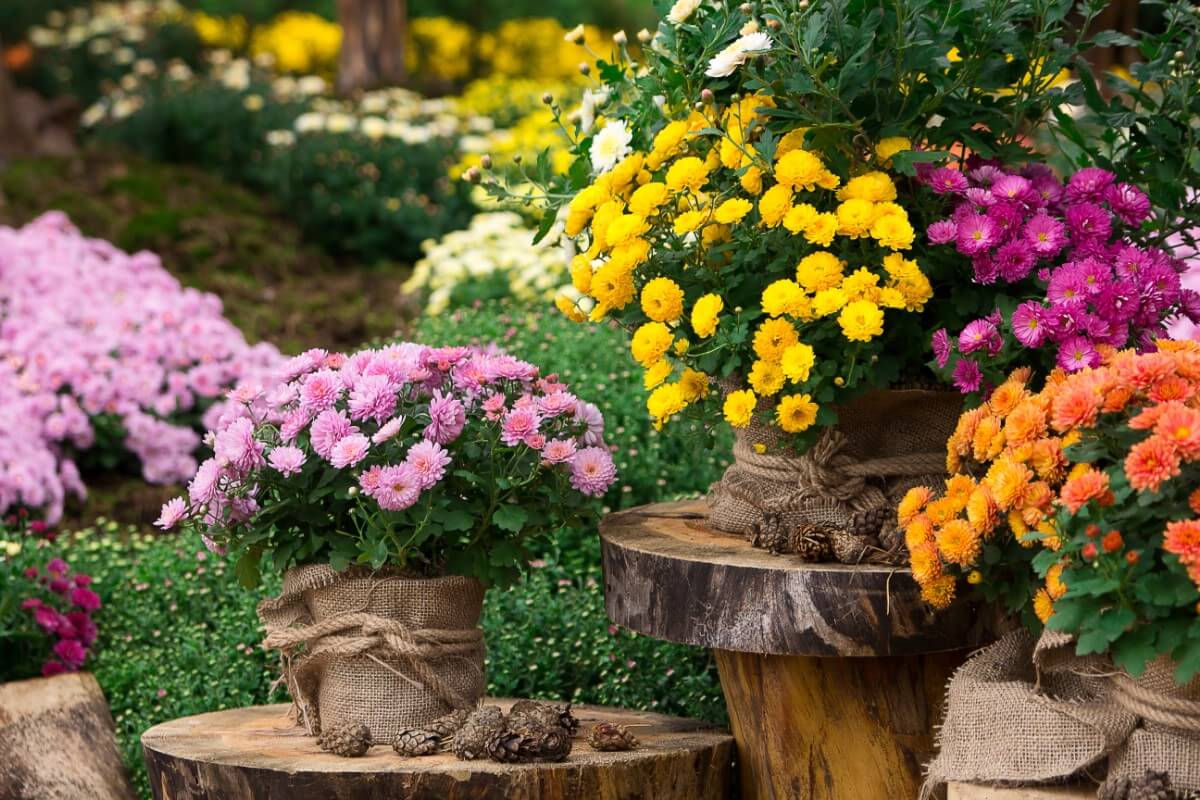
Chrysanthemums, also known as mums, are members of the Chrysanthemum genus in the Asteraceae family. The name comes from the Greek words for “gold flower,” but they come in many colors beyond gold or yellow. Chrysanthemum and mum are interchangeable terms, and while they used to include other genera, they have since been separated. With over 20,000 cultivars in the world and 7,000 in China, there are plenty of options for gardeners. The diversity of chrysanthemums means that there are cultivars that look completely different from each other. Growing chrysanthemums is an addictive hobby due to the endless possibilities.
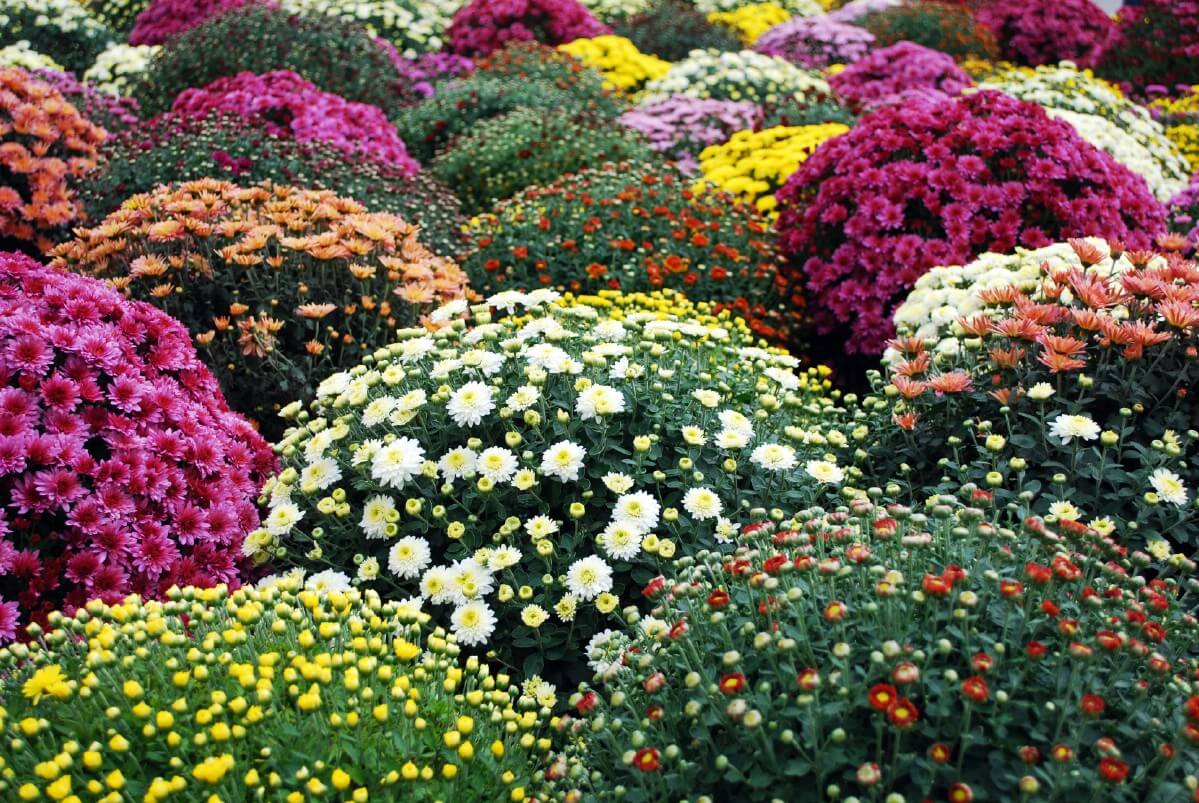
There is an incredible variety of chrysanthemums available, with numerous types of these robust and attractive flowers.
The zones for growing chrysanthemums are between 4-9, while they typically bloom from summer through autumn and grow to be 1-3 feet tall. These flowers require a loamy, well-drained, and neutral soil and can grow in full or partial sun.
Chrysanthemum varieties are classified according to the shape of both their flowers and the plant itself. With so many varieties, there are numerous categories, including single blooms, quilled blooms, spider blooms, brush/thistle blooms, anemone blooms, pompons, decorative blooms, reflex and incurve blooms, spoon blooms, and cushion blooms.
There is an overwhelming number of chrysanthemum cultivars, with over 20,000 different types available. While it’s impossible to cover them all, here are a few recommendations in a range of colors that would be perfect for your flower bed.

The options may seem endless, but these selections are a fantastic starting point! Let’s dive in. Bolero is a type of chrysanthemum that looks like a daisy with yellow petals and a center. If you’re searching for a big, stunning mum that will be the standout in your garden, consider Apricot Alexis. Its golden flowers are mesmerizing, and its robust stems do an excellent job supporting its weight. Moonbeam is a pompon mum with white petals that have a yellow tint towards the middle. Ruby Mound is another great option if you want a striking display of red mums. The Mocha variety is a spider mum with thin, pink petals that give off a chaotic yet elegant feel. Chiffon is a cushion mum that comes in vibrant coral or salmon colors, sometimes with a hint of yellow. Honeyglow is named for its warm, orange-gold hue, making it perfect for autumn. Daybreak is an anemone mum with pink and yellow centers and petals that look like rays of light. Chesapeake is another spider mum, but with more layers of slender petals that give it an orderly and sophisticated appearance. Anastasia White is a quill mum with small, quill-like petals radiating from a yellow center. Finally, Coral Charm is a mum with showy, coral-pink blossoms that adds plenty of color to your garden beds. Keep in mind, these are just a few of the many chrysanthemum varieties available. Chrysanthemums are originally from East Asia and the northeastern part of Europe, but now they can be found all over the world, including North America and Oceania. They are hardy in zones 4-9.
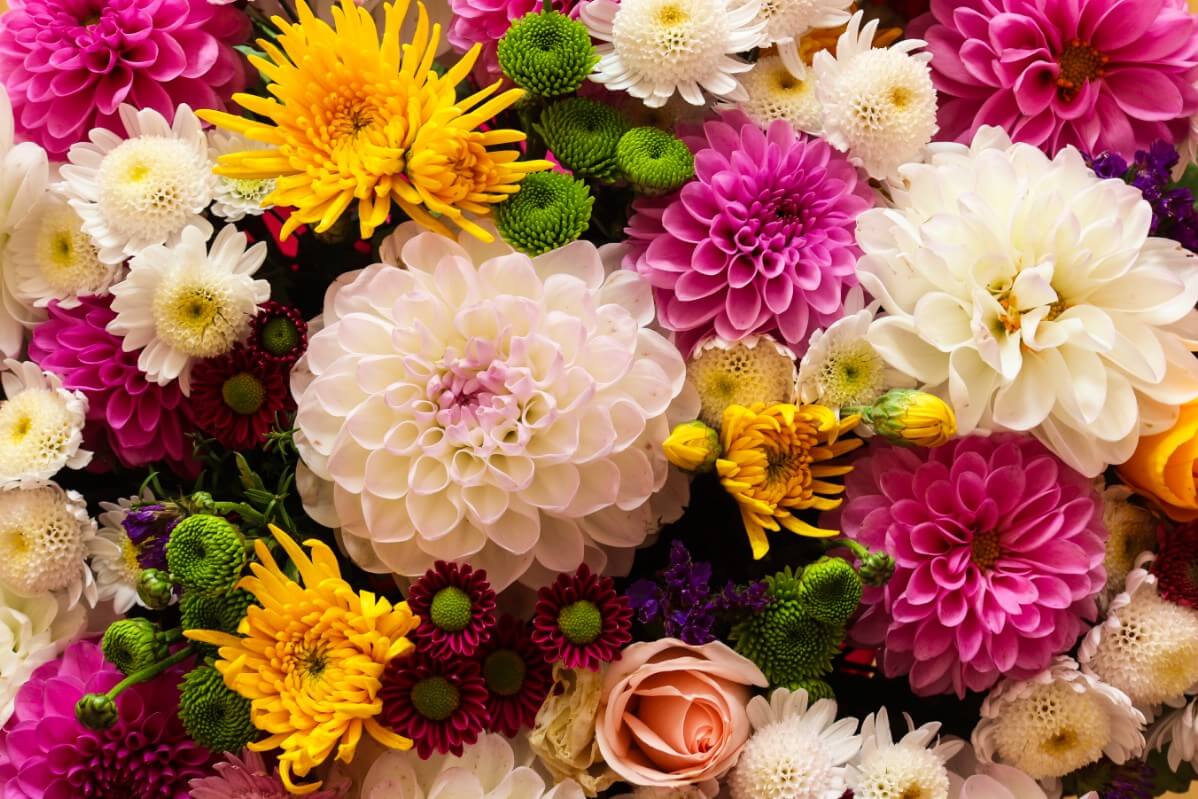
There are numerous advantages to cultivating chrysanthemums. These flowers are hardy and adaptable enough to thrive in various locations around the world. If you’re contemplating growing mums in your garden, here are some reasons to consider doing so. Firstly, mums can add a stunning burst of color to your fall garden. With tens of thousands of varieties of mums available, you can discover a broad spectrum of hues that will amaze you. Also, there’s an endless array of cultivars to experiment with, making it easy to become a dedicated chrysanthemum enthusiast. In addition, the individual flowers of mums are not only pleasing to the eye but also bloom so densely that gaps between them are scarcely visible. You can also enjoy beautiful cut flowers from your garden, which are perfect to display in your home. Furthermore, chrysanthemums can be used to make tea, and their culinary applications make them an excellent choice for growing ornamental plants in your garden. Additionally, planting chrysanthemums can attract butterflies to your garden and they can be grown in both garden beds or containers. Another advantage is that mums are deer-resistant, and they offer a long bloom period that lasts for weeks after blossoming. These are just some of the benefits of growing chrysanthemums, and you’re likely to discover more as you begin cultivating these diverse blooms. Chrysanthemums blossom during the summer and fall, making them perfect for filling in your garden when your spring flowers start to wilt.
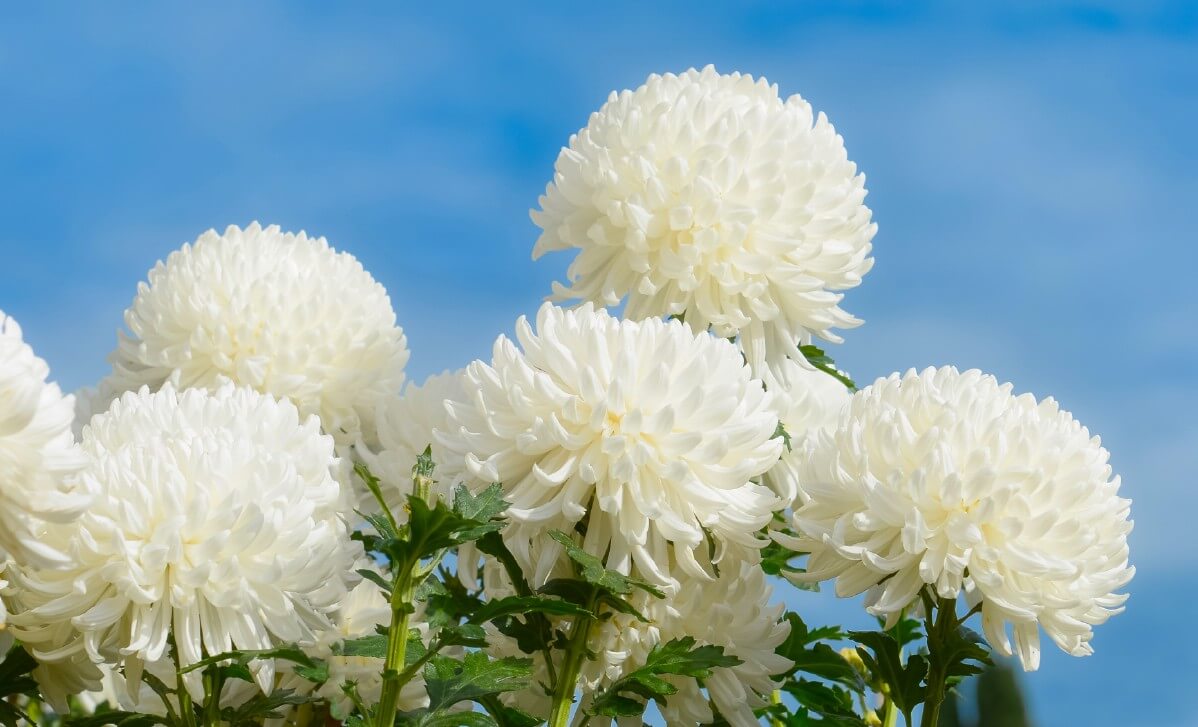
Mums are a wonderful addition to any garden, especially during late summer or early fall when other flowers may have already stopped blooming. These vibrant flowers can brighten up your garden with their stunning hues. The best part is that once the chrysanthemum blossoms open, they can last for two to three weeks. However, you can prolong their blooming period by deadheading them, which will result in repeat blooms that can last for four to eight weeks. So, if you want to enjoy your garden mums for a longer period, go ahead and deadhead them! As for planting mums, it’s best to do so during the spring or early summer, ensuring that they have enough time to establish themselves before blooming season arrives.
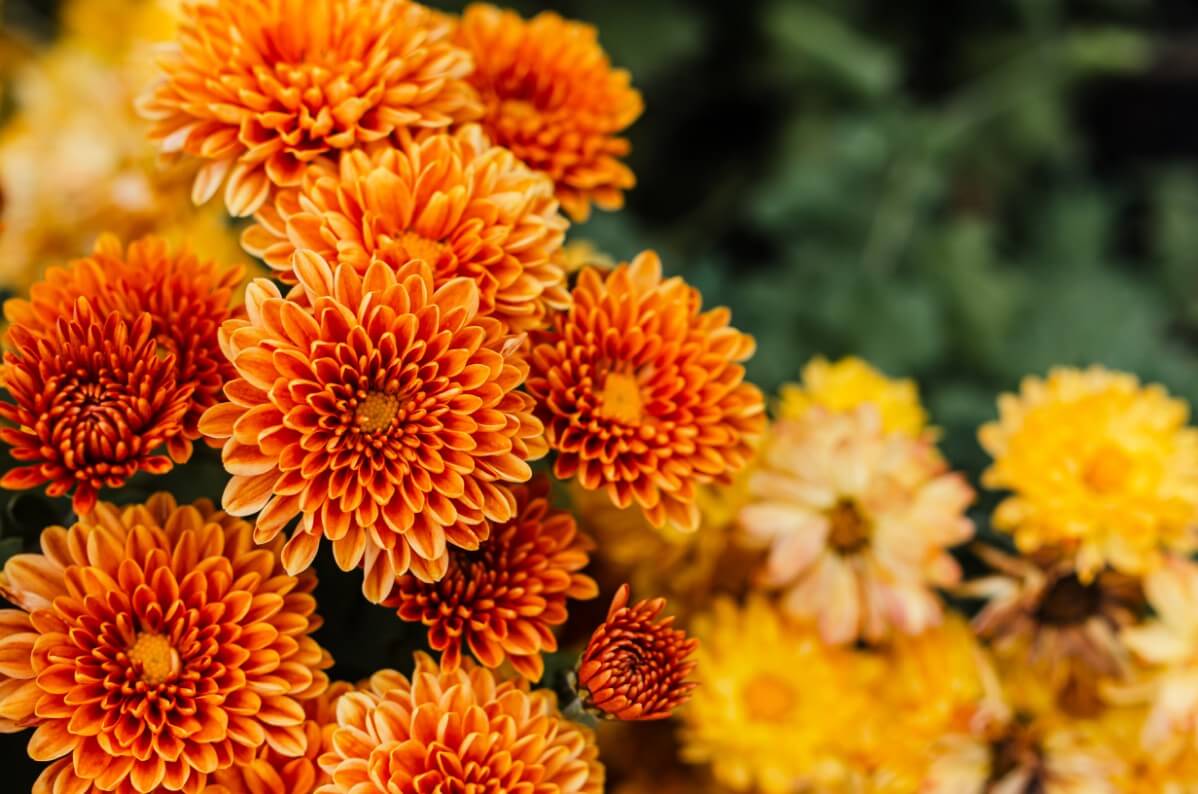
Starting chrysanthemums can be done indoors or outdoors. To plant them indoors, calculate 6 to 8 weeks before the last expected frost date for spring. For outdoor planting, choose early spring or fall, but ensure at least six weeks before the expected frost. Planting during frost may result in killing them. For optimal growth, consider soil quality, sunlight exposure, and water requirements. Ensure appropriate growing conditions to help your chrysanthemums thrive.
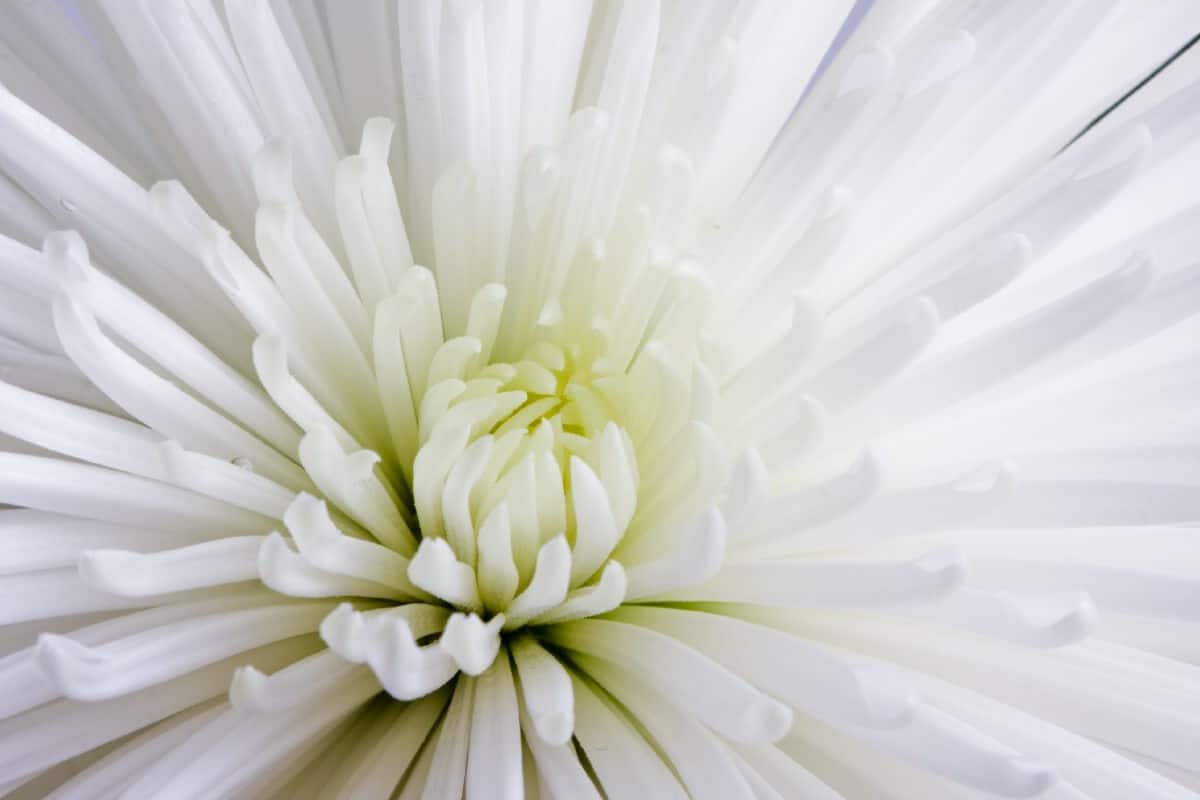
Are you curious about what it takes for mums to flourish? Let’s dive in! One of the crucial factors to consider is the amount of sunlight they receive. While partial sun can suffice, planting them in full sunlight will undoubtedly make them much happier. However, it’s important to note that excessive sun exposure may cause them to dry out quickly, so don’t forget to keep them hydrated regularly. In case you don’t have an area that provides full sun, a spot with at least three hours of direct sunlight per day should suffice. Anything less than that might lead to less foliage or fewer blooms. Moving on, the type of soil you use also plays a vital role in nurturing mums.
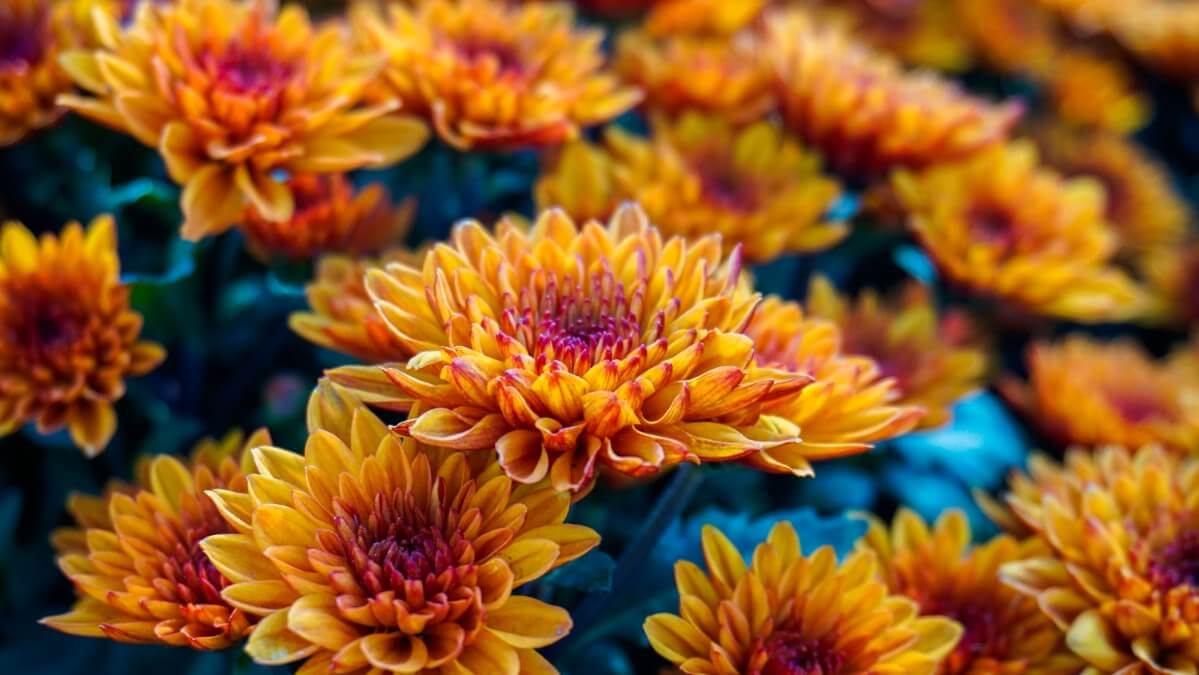
To keep your chrysanthemums healthy, it is important to provide them with moist, yet well-draining soil. However, over-watering should be avoided to prevent the onset of rot. The optimal soil type for mums is rich and well-drained, and it is essential to maintain ideal moisture levels in the soil after planting. Excessive soil moisture can lead to rot, which can quickly damage your plants. It is recommended to keep an eye on the pH level of the soil, which should be around 6.5. So, how much water do your mums need? They require sufficient moisture, but you must ensure that the soil never becomes soggy.
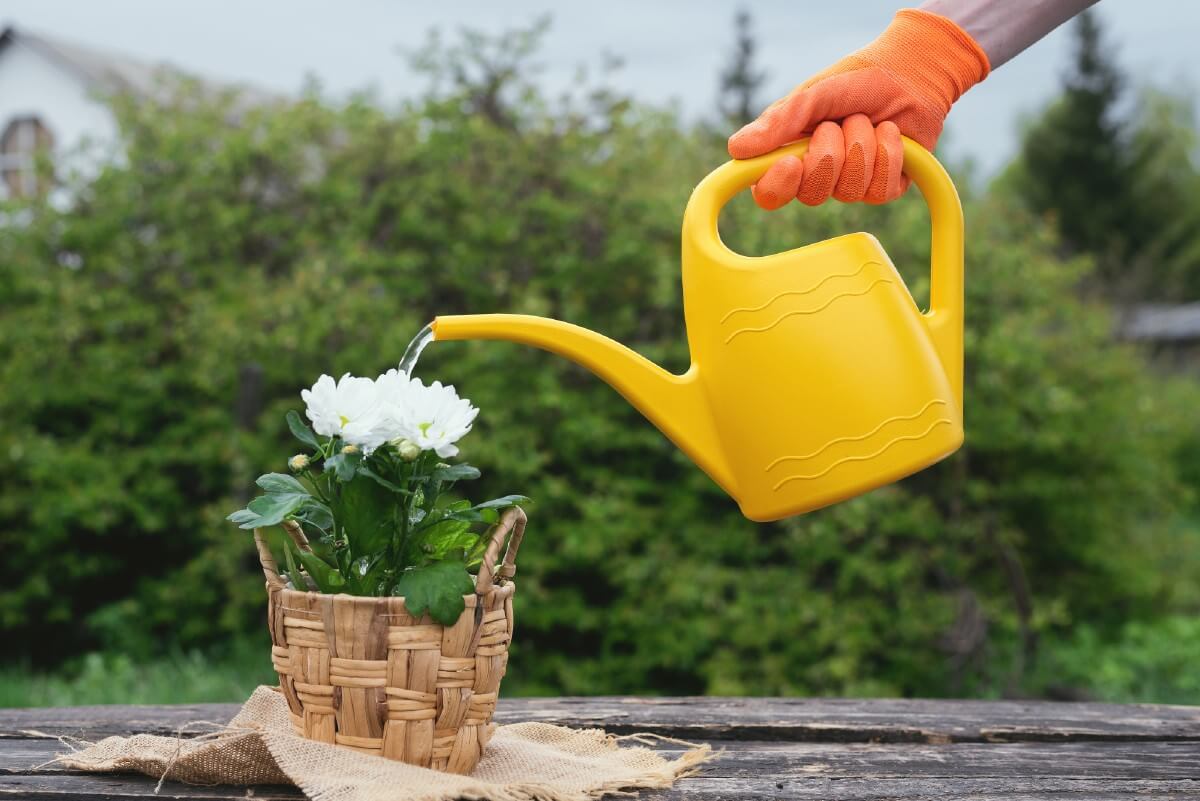
If you have mature chrysanthemums, it’s essential to water them frequently, up to three times per week. However, when watering, make sure to do it deeply without allowing any standing water to form or getting the leaves wet. The National Chrysanthemum Society suggests watering your mums about one inch a week during the early season, the same way you water your lawn. As the plants grow larger and the weather gets warmer, increase the watering accordingly. By the time September and October come around, watering three times a week is ideal for your plants. To plant your mums, follow these simple steps.
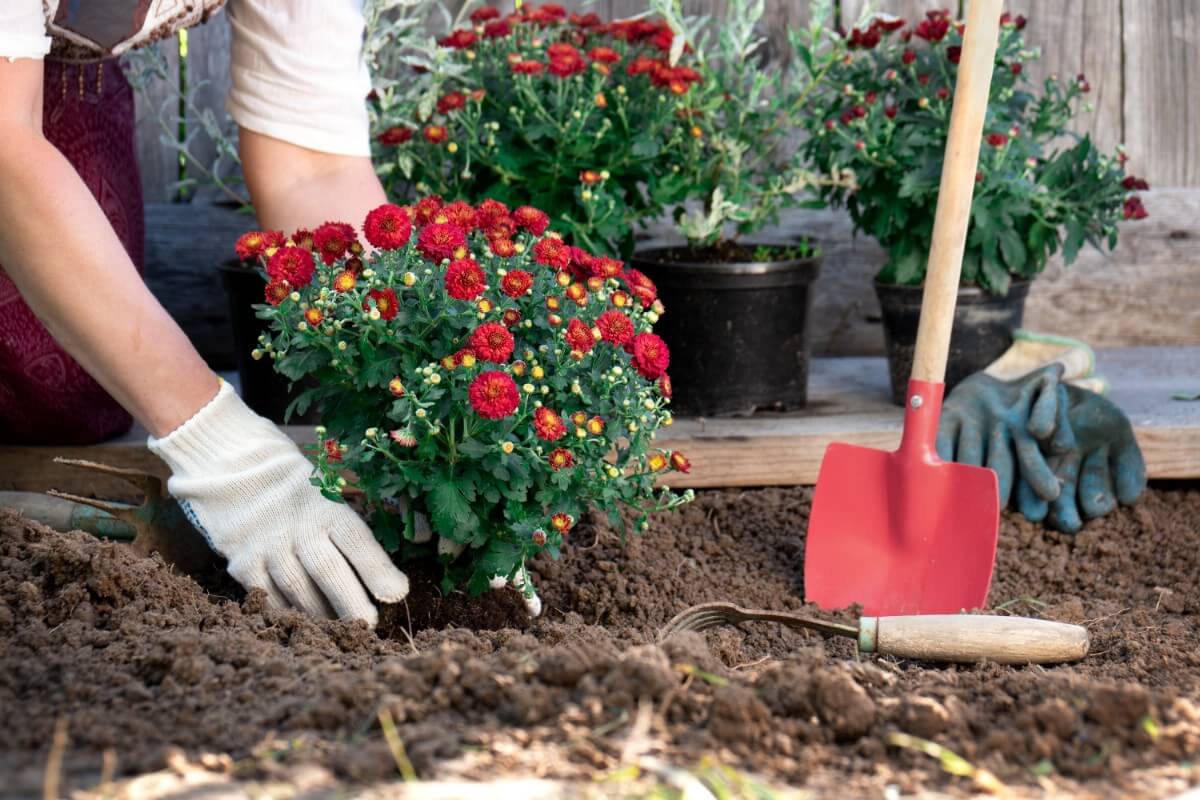
There are various ways to plant mums, including utilizing pots or planting them directly into the soil. Additionally, you can grow them from either seeds or cuttings. Once you’ve determined the ideal time of year for planting chrysanthemums and the optimal growing conditions, it’s time to delve into the planting process itself. We’ll go over both potting and ground planting techniques as well as provide guidance for starting your mums from either seeds or cuttings. For those who enjoy adding an array of colors to their potted plants, growing mums in containers is definitely a possibility.
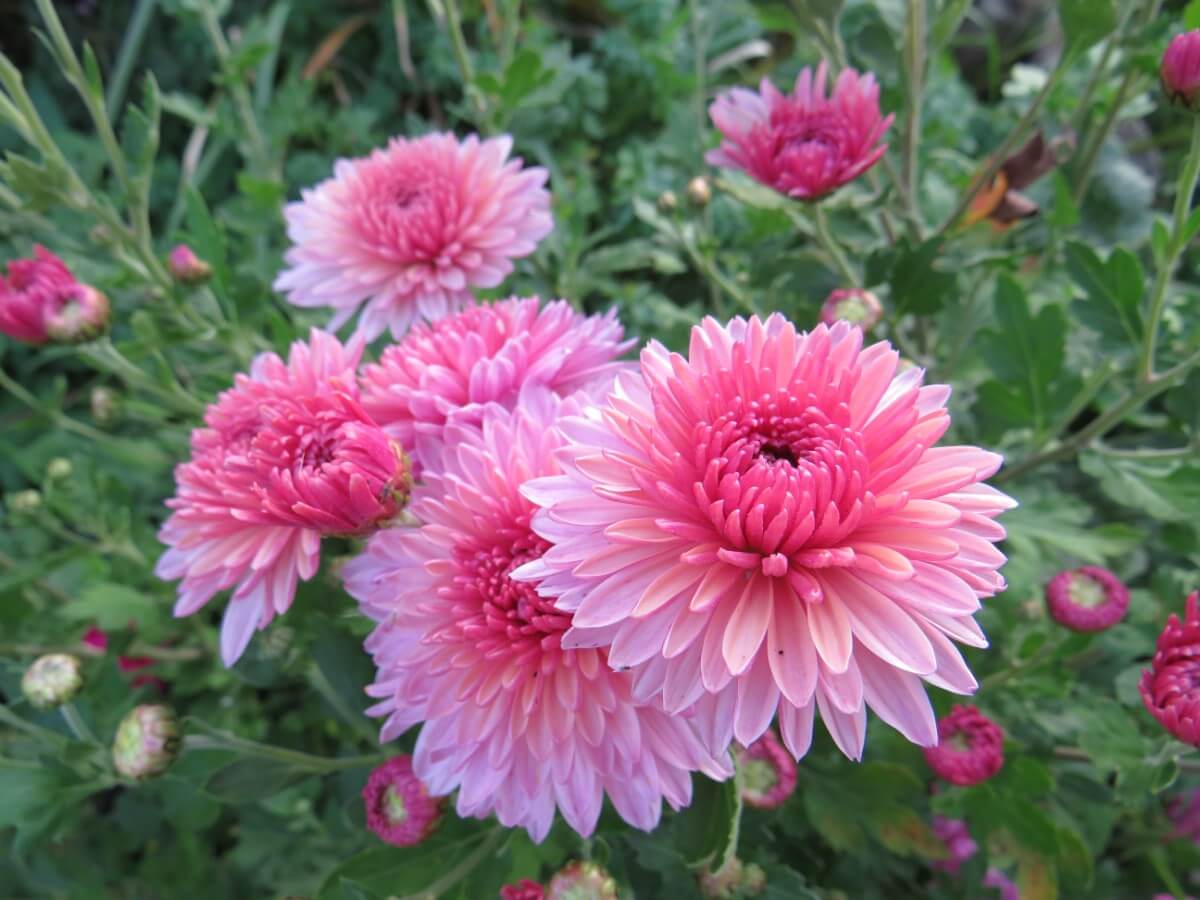
Growing mums in containers is an excellent idea, especially if you’re looking to decorate your home with beautiful fall flowers. Here’s a step-by-step guide to help you get started:
1. Purchase a potted mum from the store.
It’s that simple! Most people buy their mums from garden centers and nurseries.
2. Choose a pot for your mum.
Check the size of the original pot that your mum came in. It’s too small, so you’ll need to get a slightly larger one to transplant it into.
3. Fill the new pot with well-draining soil.
Using potting mix ensures that your mums thrive in the container.
4. Transplant your mum immediately.
Once you arrive home, carefully remove the mum from its old pot and loosen its roots. Place it in the new potting soil in the container you picked out for this purpose and backfill the potting soil after the root ball is in place.
5. Water the mum well.
Mums often dry out in stores, so it’s essential to water them deeply once you bring them home. You can even try filling a container tray with water and setting the container inside so that the water can seep up through the bottom where the roots can reach it. Make sure not to leave the container in the water for more than a few hours.
6. Find a suitable location for your mum.
Keep the pot in a sunny location, either indoors or outdoors, to ensure ample sunlight. If your plant is placed by a sunny window, make sure to keep an eye on the temperature and avoid exposing it to extreme heat.
7. Care for your potted mums.
Finally, water your mums regularly and fertilize them occasionally to help them grow healthy and strong. With these tips, you’ll be able to enjoy beautiful and vibrant mums all season long.

Planting chrysanthemums in containers can be a simple task. However, if your mums have been kept indoors, it’s important to acclimate them before moving them outside permanently. To ensure proper establishment, watering may be required daily until the soil is moist throughout. Once established, monitoring the soil moisture is key. If it becomes dry, it’s time for another round of watering.
If you want to move your indoor mums outdoors, be sure to acclimate them by introducing them to outdoor conditions gradually. Moving them in and out until they adapt to the tougher outdoor conditions will help.
As for ground planting, starting chrysanthemums from seeds or transferring potted mums to garden beds are two options. Here, we’ll focus on growing mums from seeds. If you’re interested in transplanting established mums from pots to garden beds, check out our guide on how to do so.

Growing chrysanthemums from seeds can be a cost-effective way to produce a large amount of flowers. To get started, follow these steps: First, make sure you are planting at the right time – about 6-8 weeks before the last spring frost. Use small germination pots with sterile seed starting mix and moisten the mix evenly without drowning the seeds. Carefully plant the seeds and cover them lightly, then provide adequate heat and light for germination. Keep the soil moist and wait for the seedlings to sprout in about 10-15 days. Thin out overcrowded seedlings by cutting them at the stem, and transplant them into small pots once they reach a few inches tall. Gradually harden them off if you plan to move them outdoors. While it is possible to start mums from seeds in your garden bed, it may be more challenging due to less climate control and the need to ensure soil moisture during the germination phase. Alternatively, you can grow chrysanthemums from cuttings.
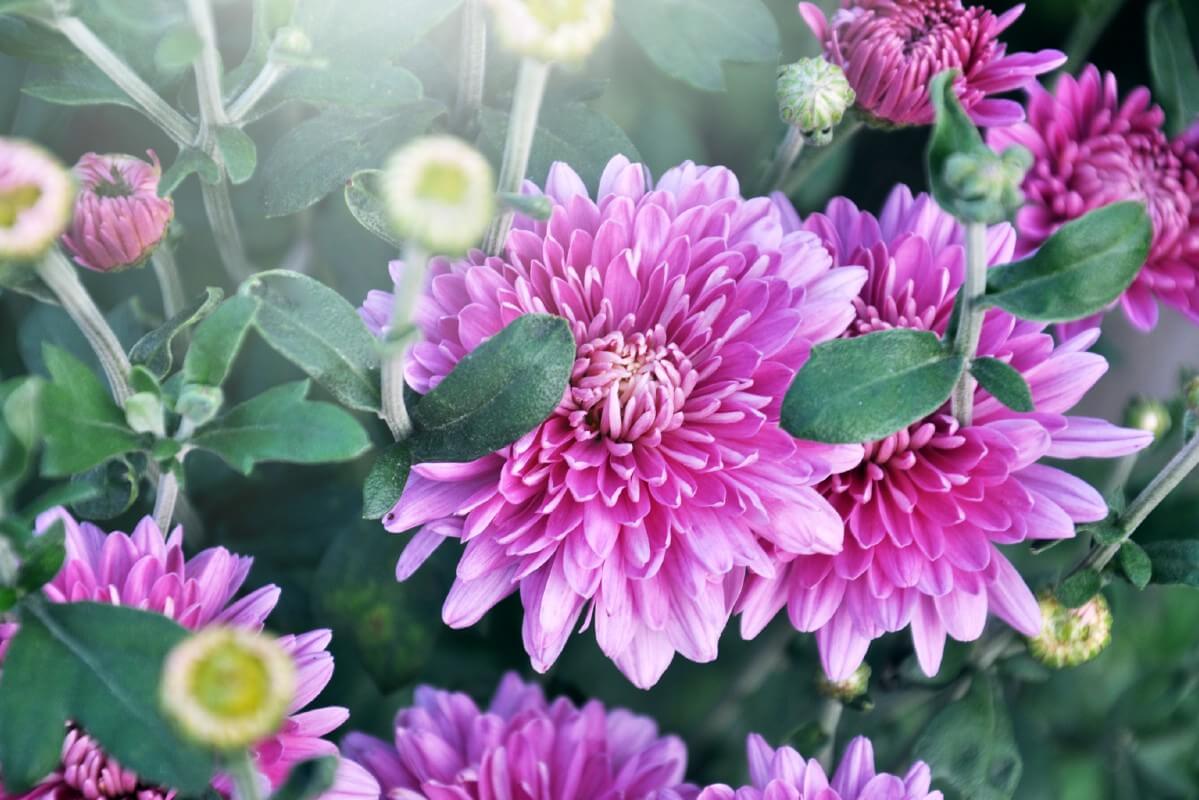
Chrysanthemums can easily be multiplied by taking cuttings from existing plants, which is a great way to save some money! If you already have mums, you can propagate them by following these steps:
1. Wait until late spring or early summer before propagating your mums. This should be done when there are no flowers on the plant.
2. Water your mum generously the night before taking cuttings, around 4 inches of water is recommended.
3. Prepare some pots with perlite and water them heavily. You will need a 3-inch pot for each cutting.
4. Take cuttings from the end of a stem that is around 2-3 inches long. The stem should be leafy and fresh.
5. Cut the stem with pruning shears just under a pair of leaves, around an eighth of an inch.
6. Remove the leaves from the bottom of the cutting and apply some rooting hormone talc to the base of the cutting if desired.
7. Insert the cutting into the perlite in the pot and leave the leaves exposed. Place the pots in a spot with plenty of indirect sun.
8. Monitor the cuttings regularly to see if they need water. Mist the perlite with a spray bottle when it starts to dry out.
9. Wait for the cuttings to form roots, which may take up to four weeks. To check if roots have formed, gently pull the cutting near the soil to see if there is resistance.
10. Once the cuttings have formed roots, transplant them to their permanent location.
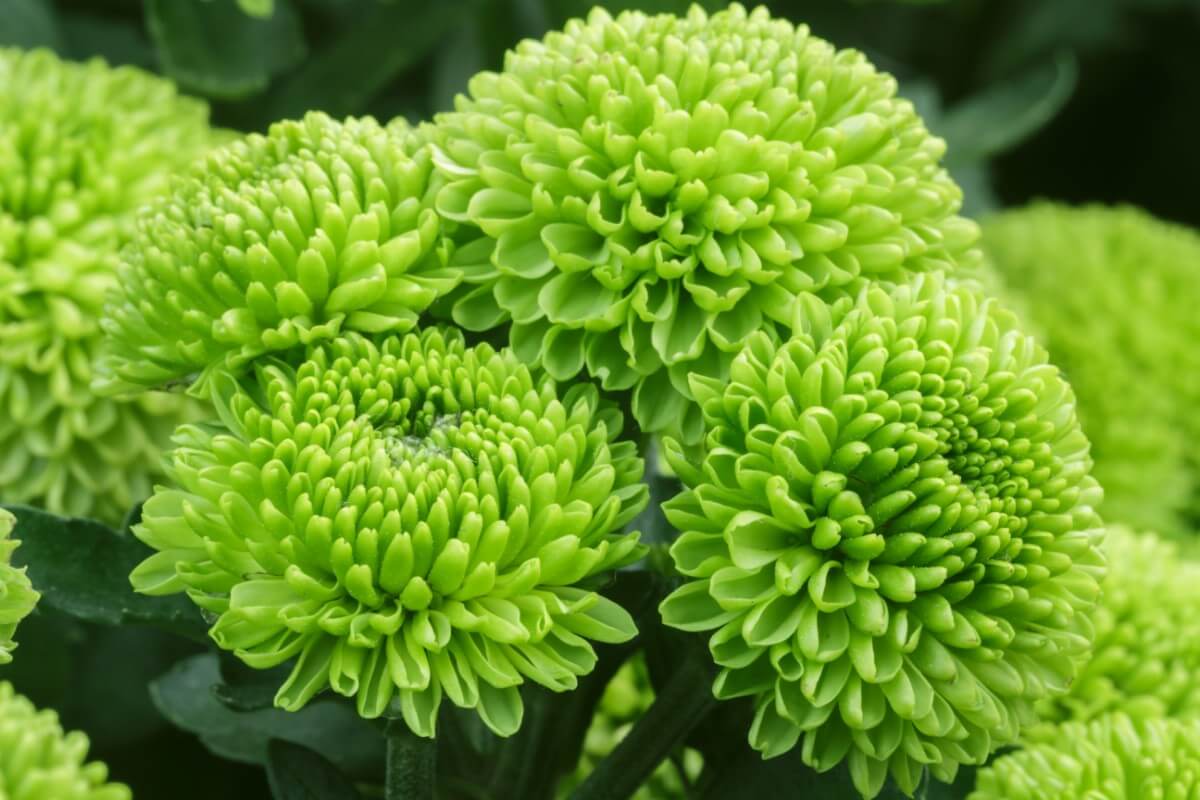
To ensure strong and vibrant growth of your plants and flowers, it is important to ensure that your cuttings have developed a healthy root system before transplanting. A key indicator of readiness is when the roots reach a length of 1-2 inches in their initial pots, allowing them to be safely relocated to larger containers or planted directly into the ground.
If you choose to plant directly into the ground, it is important to first harden the cuttings as they may be more vulnerable to the elements if they’ve been grown indoors.
Once your chrysanthemums are planted, it is important to properly care for them. This includes fertilization, mulching and other key aspects of maintenance. To ensure optimal growth, use high-quality fertilizer regularly and apply a layer of mulch to protect the soil and retain moisture. By following these tips, you can expect healthy and beautiful blooms from your mums.
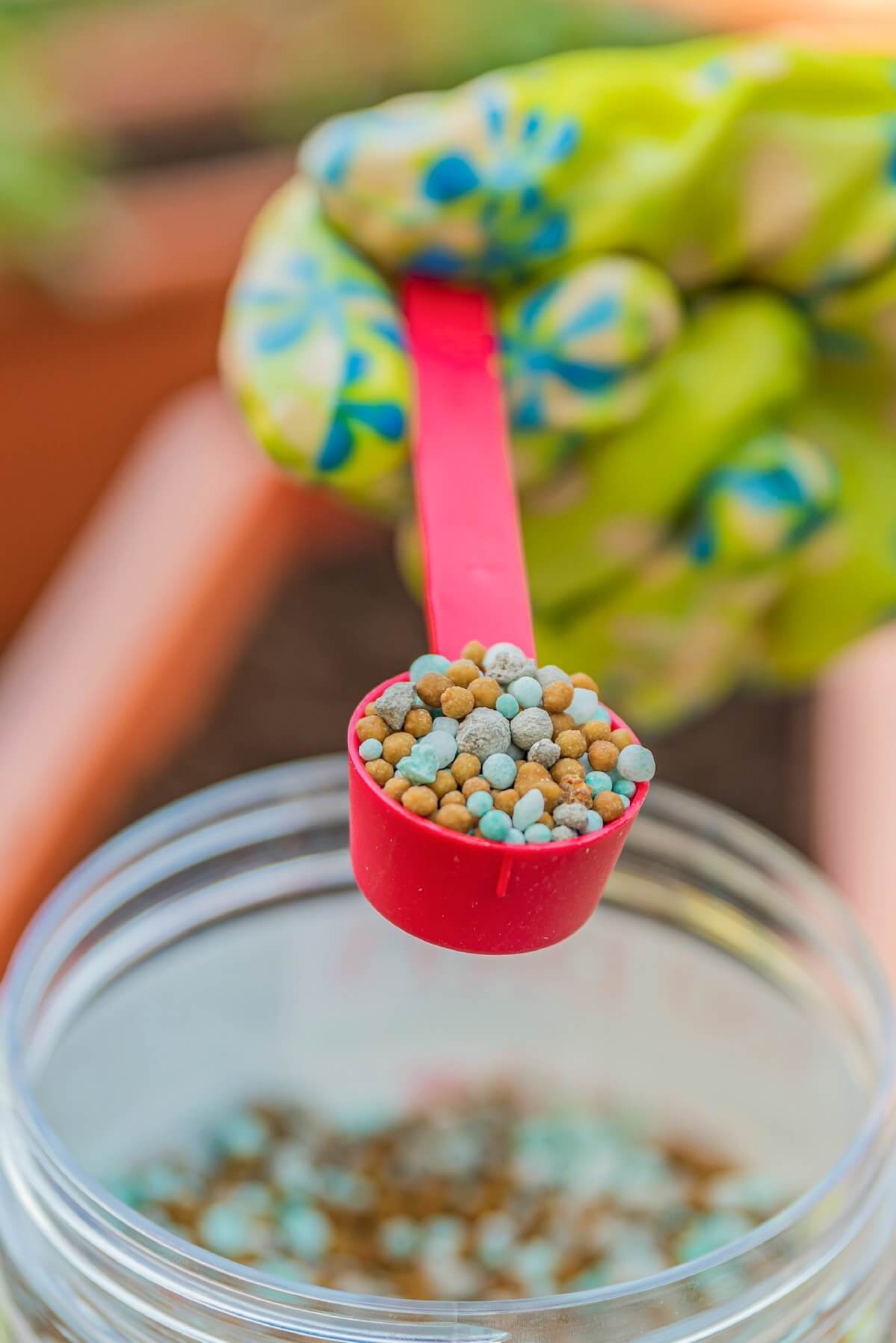
For mums to thrive throughout their extended blooming season, it is crucial that they receive sufficient nutrients from the soil. To achieve this, consider adding compost to your planting site. Another option is to apply a balanced fertilizer like 5-10-5 or granulated 10-10-10. It’s best to fertilize your chrysanthemums during periods of new growth and around August (avoid feeding them beyond this point). As for mulching, use materials like straw or leaves to protect against moisture loss and weed growth around your mums.
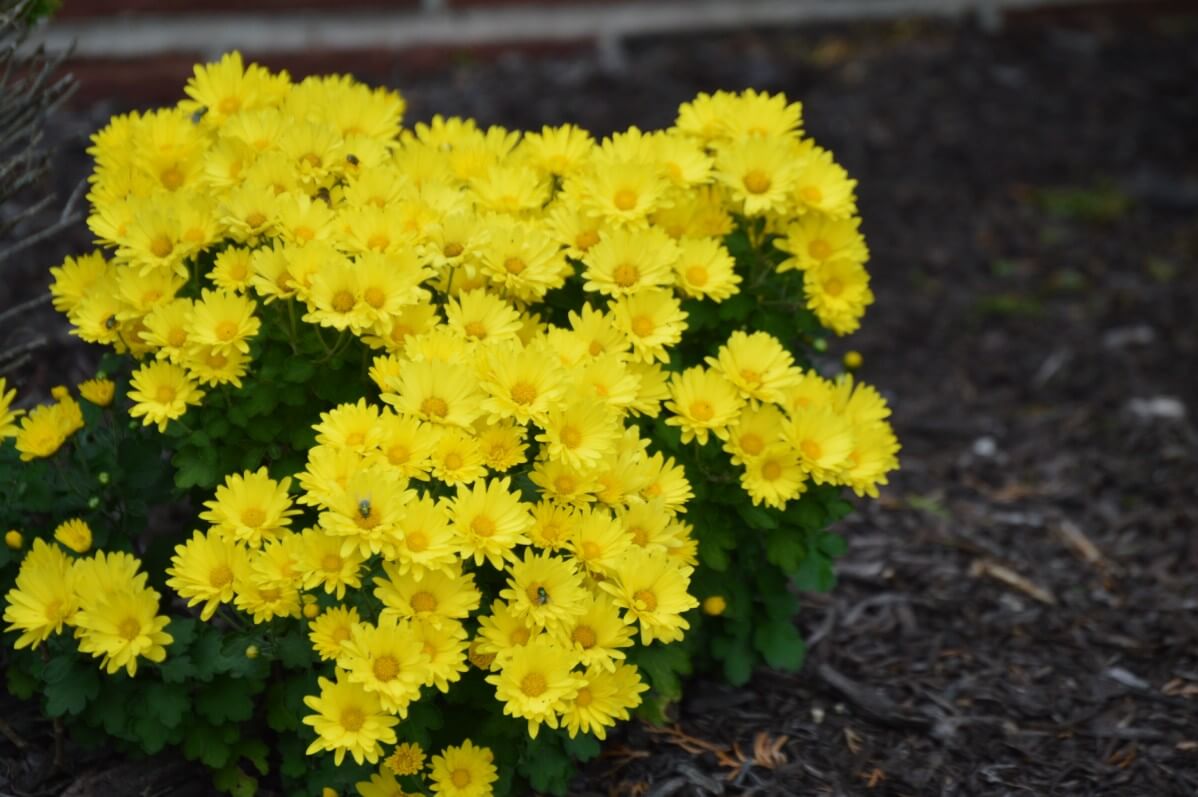
If you want to protect your chrysanthemums during cold weather, retain soil moisture, and control weed growth, mulching is the way to go. For a more detailed guide on how to mulch your chrysanthemums, Iowa State University has provided some recommendations. According to the university, applying mulch in late fall after several hard freezes, which usually occurs in mid-to-late November in Iowa, can increase the chances of your garden mums surviving winter. They suggest using clean, weed-free straw, pine needles, or evergreen branches as suitable mulching materials. However, avoid using leaves as they tend to mat down and provide inadequate protection. Additionally, the university advises against cutting back the plants in fall, but it’s worth noting that this advice may not always apply. Refer to the later section in this article for further explanation on this matter. If you’re interested in staking your mums, keep reading to find out more.

To keep large chrysanthemums from drooping, staking is often necessary. However, planting them in rows is an alternative solution. Pinching the plant is a technique that results in fuller growth, but it also means heavier plants that may require additional support. In such cases, planting them in rows or staking them using three or four garden stakes can help. Adding strings between the stakes for extra support is recommended. Choosing green stakes and strings can blend in with the plant color. More information on pinching techniques can be found in the section below.
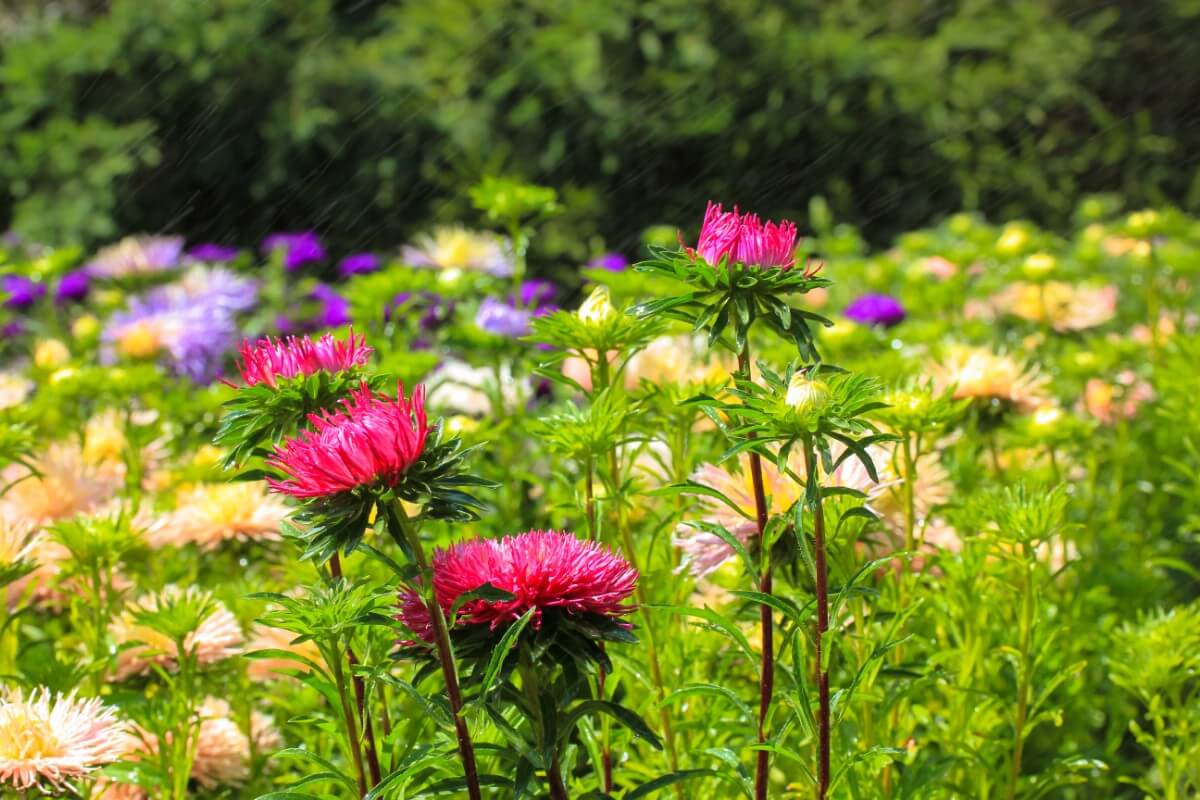
If you want your mums to be fuller, then you should familiarize yourself with the techniques of pinching or pruning. Perhaps you’ve admired your neighbor’s mums and wondered why yours aren’t as lush. The secret could be that your neighbor has been pinching their mums while you haven’t. Pinching is a method that can help ensure that your mums produce a dense burst of blooms. Here’s how to do it: Wait for your mum to grow to about 4-6 inches in height and then pinch off the top part of the stem, removing 1-2 inches. Allow your mum to continue growing, and when shoots emerge from the stem and reach a length of 4-6 inches, pinch off the top 1-2 inches of each. Repeat this process until your mum is growing more outward than upward and has a lot more flower density at bloom time. While it may take some time, you’ll be surprised at how easy it is to achieve fuller mums using this technique!
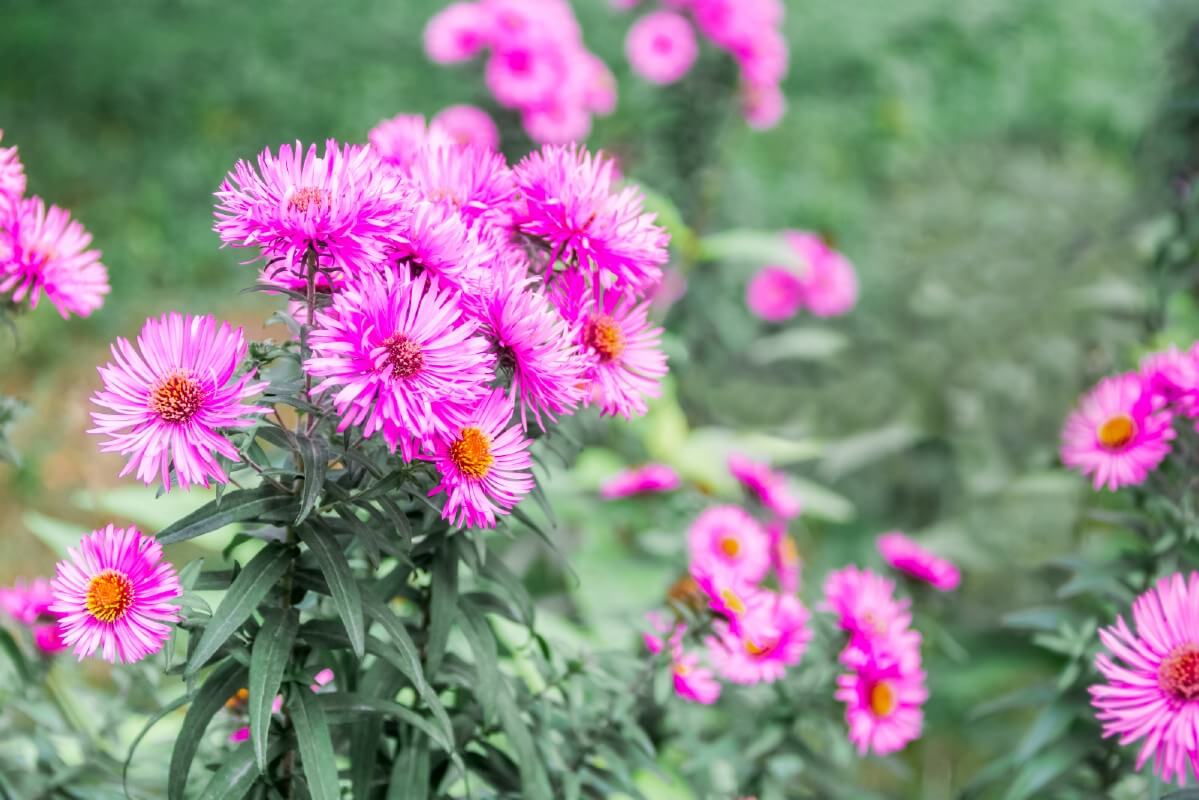
Determining whether to prune your chrysanthemums for the winter largely depends on your location. To avoid confusion, you may have received contradictory advice on the matter. Wilson Bros Gardens advises that northern gardeners should leave dead stems to protect the roots from cold weather during the winter, while those residing in other regions may cut the dead stems after blooming season. Chrysanthemums are prone to several diseases like leaf spots, rust, powdery mildew, wilt, gray mold, ray speck, and blight, among others. Nematodes and insects, such as aphids, two-spotted spider mites, leafminers, and slugs, are also common pests that can infest chrysanthemum plants. If you need to transplant mums, follow proper guidelines to ensure their successful growth.
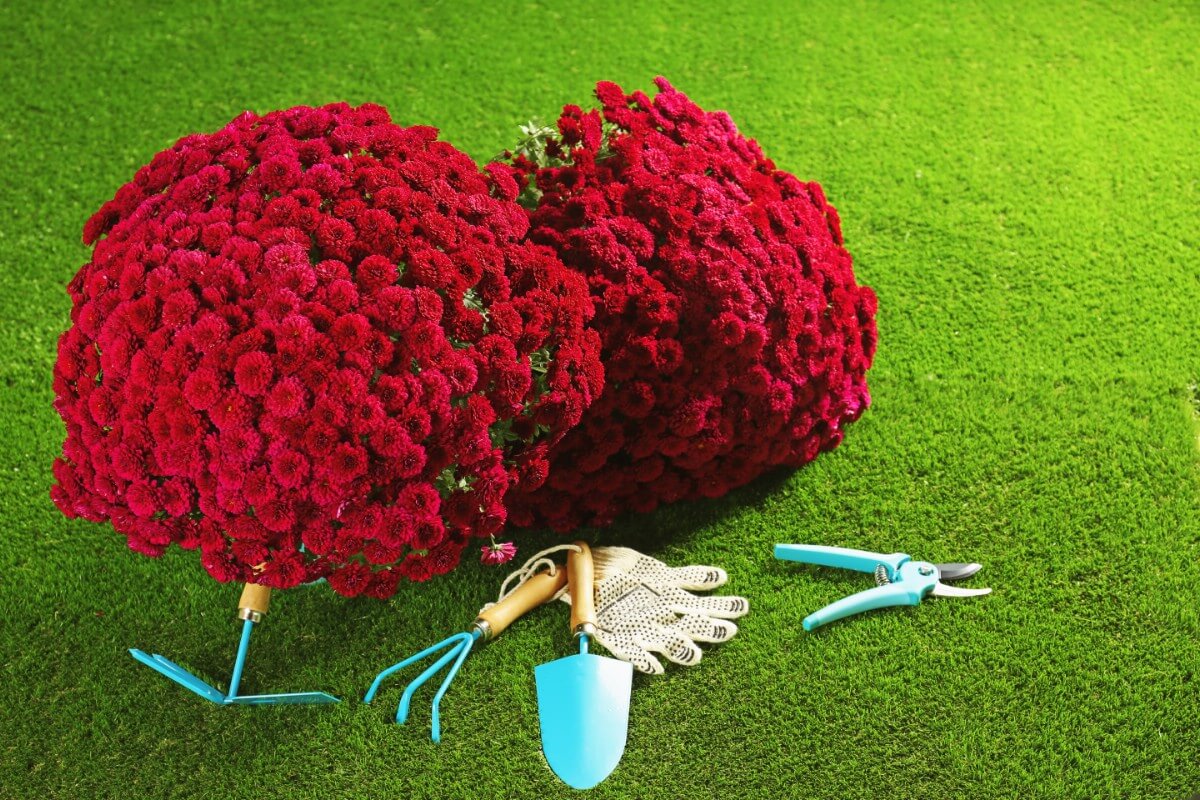
Moving mums to your garden is a breeze, and they transplant exceptionally well. However, it’s crucial to ensure sufficient spacing for these large plants. If you’re planning on transplanting them, here are a few tips to follow:
1. Choose a suitable location.
Opt for an area that receives abundant direct sunlight.
2. Prepare the soil.
Make sure your soil is moist but drains well and won’t become waterlogged. Avoid giving your mums “wet feet.” For optimal nutrition, mix some compost into the soil.
3. Carefully remove your mums from the pots.
Remove your mums from their containers with great care, carefully removing any excess soil. Check to see if the roots are tightly bound, and try to spread them out a bit if they are.
4. Plant your mums.
Dig holes and plant your mums, spacing them approximately 18-36 inches apart. Keep in mind that larger mums require more space. Consider their final size, not just their current size, when determining how much room to give them. Match the depth of the soil in the garden bed to the depth of the pot in which they were initially planted.
Finally, before transplanting indoor mums outdoors, make sure to harden them first.
Looking for companion plants for your mums? Here are a few suggestions to consider.
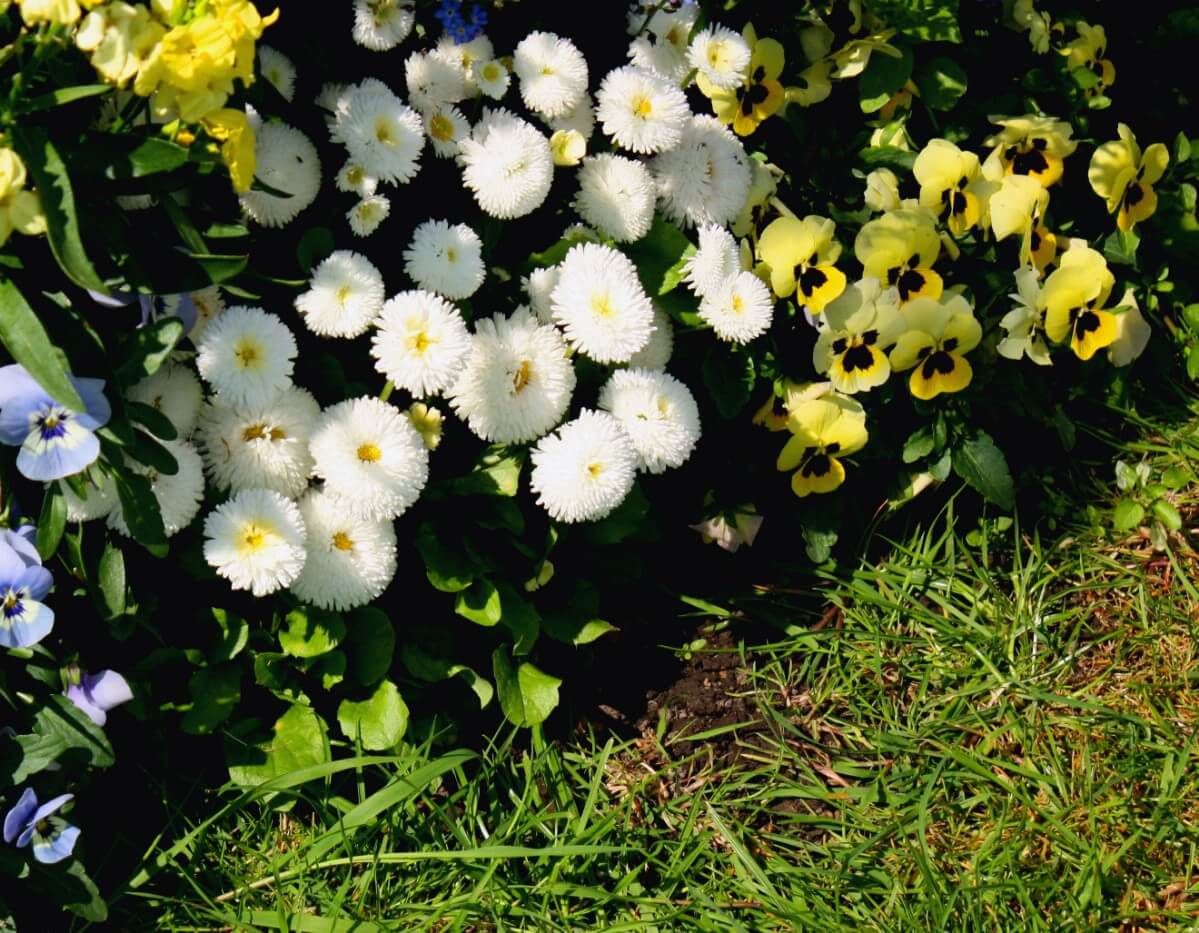
Pansies are a delightful and cheerful plant that perfectly complements mums. They bloom during the fall season, making them an excellent companion to mums, resulting in a blend of different shapes and colors. Another flower that thrives during fall is Helenium, also known as “autumn sneezeweed.” This radiant flower with its sunset hues adds to the beauty of mums and blooms around the same time. For a unique touch, consider planting kale and cabbage near your mums. Not only are they edible, but they also look great during the latter part of the season.
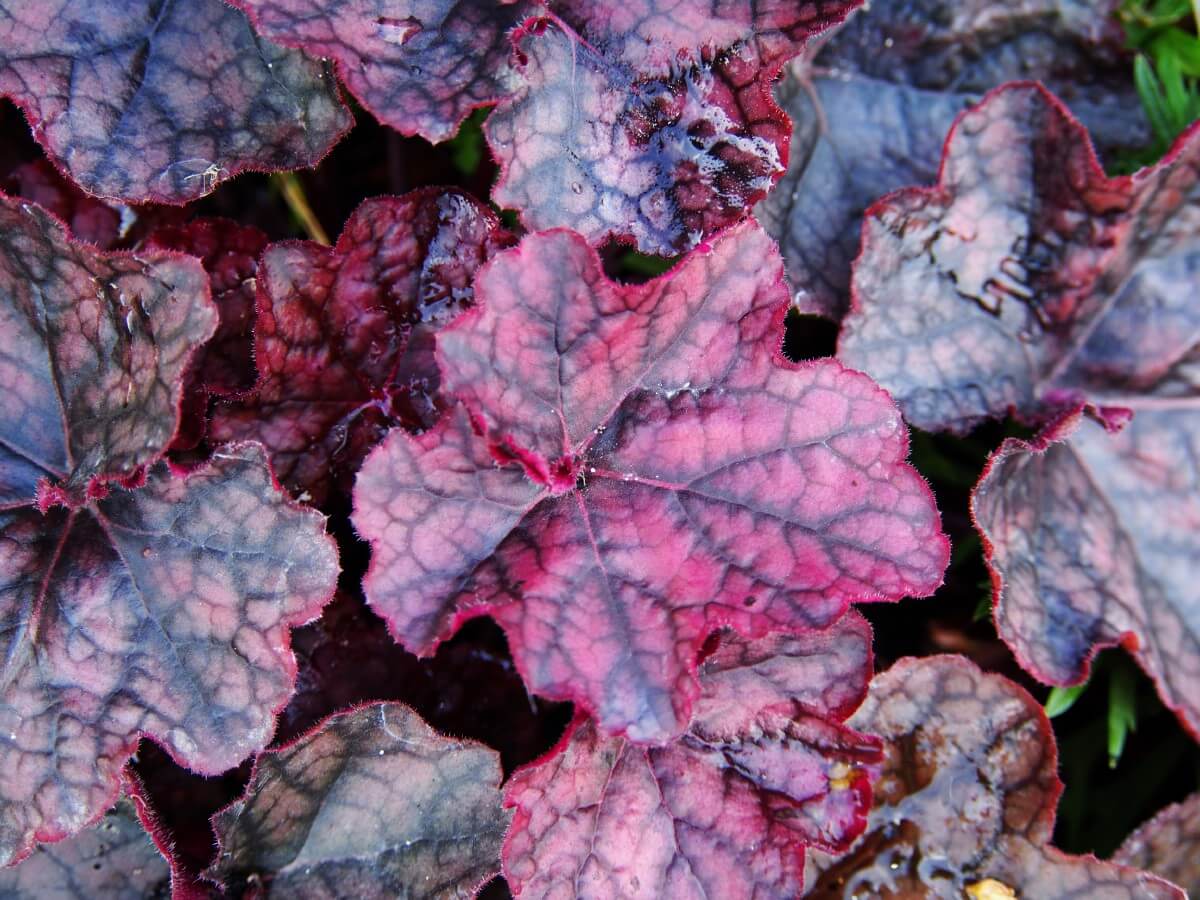
Planting coral bells alongside mums can make for a beautiful garden display. Coral bells, with their vibrant leaves, are often suggested as companion plants for various perennials, and it’s no surprise why. Besides mums, there are many other plant options that can be paired with these colorful perennials. The possibilities for companion planting are endless! If you’re interested in growing chrysanthemums, check out these frequently asked questions.
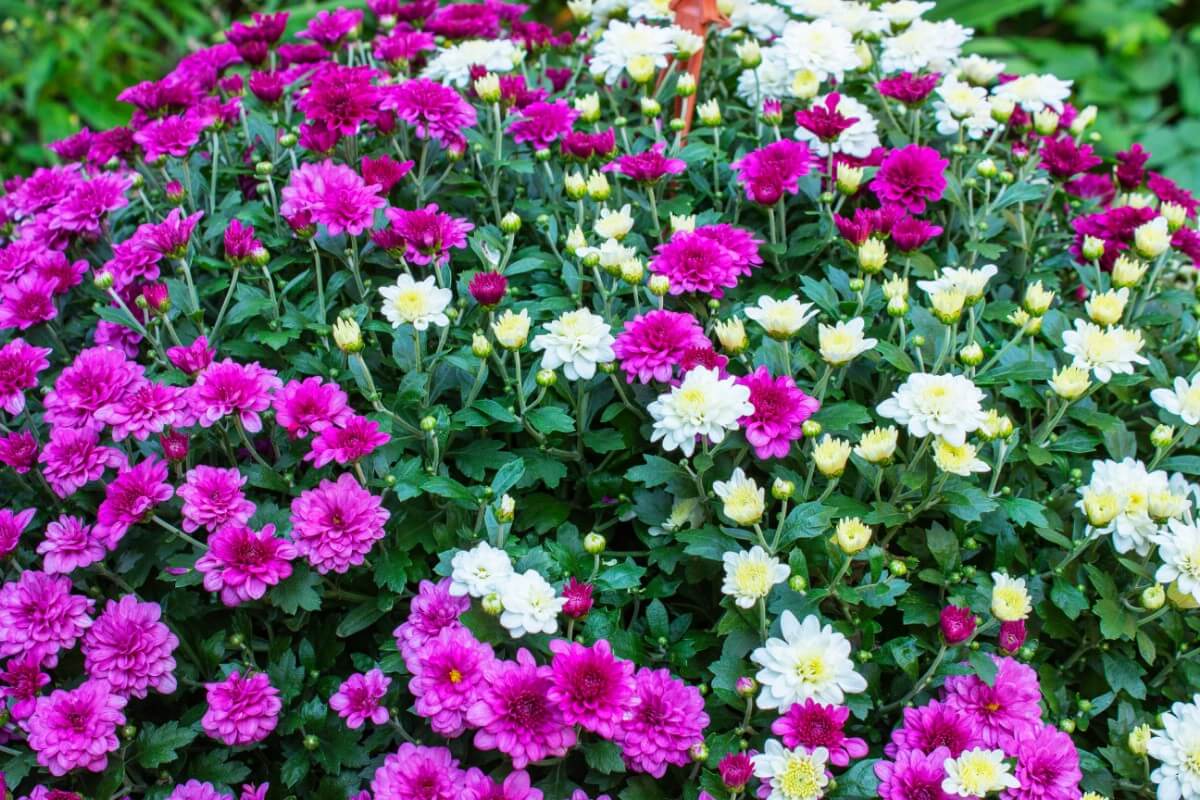
If you’re interested in growing mums, don’t worry! With a little guidance, you too can successfully plant and cultivate these beautiful and robust flowers. As an added bonus, chrysanthemums are great companions for any gardener.
To help answer some common questions about growing mums, we’ve put together a quick guide. One of the first questions you might have is about the height of the plants. Typically, chrysanthemums range from one to three feet tall.
Another important consideration is what insects and animals might eat the flowers. Unfortunately, slugs, snails, and various insects are known to enjoy munching on chrysanthemums, but fortunately, deer tend to stay away.
If you’re wondering what other plants pair well with mums, consider planting pansies, kale, cabbage, coral bells, or helenium alongside your chrysanthemums. These companion plants will complement the mums nicely.
Finally, you might be wondering whether chrysanthemums are annuals or perennials. The good news is that they are perennials, meaning they’ll come back year after year. And in case you’re confused, “chrysanthemum” and “mum” are just two different names for the same type of plant.
Now that you’re all set to start growing your own chrysanthemums, you might be wondering where to buy them. There are many places to purchase these plants, including local nurseries, flower shops, and even online retailers. So get out there and start planting!
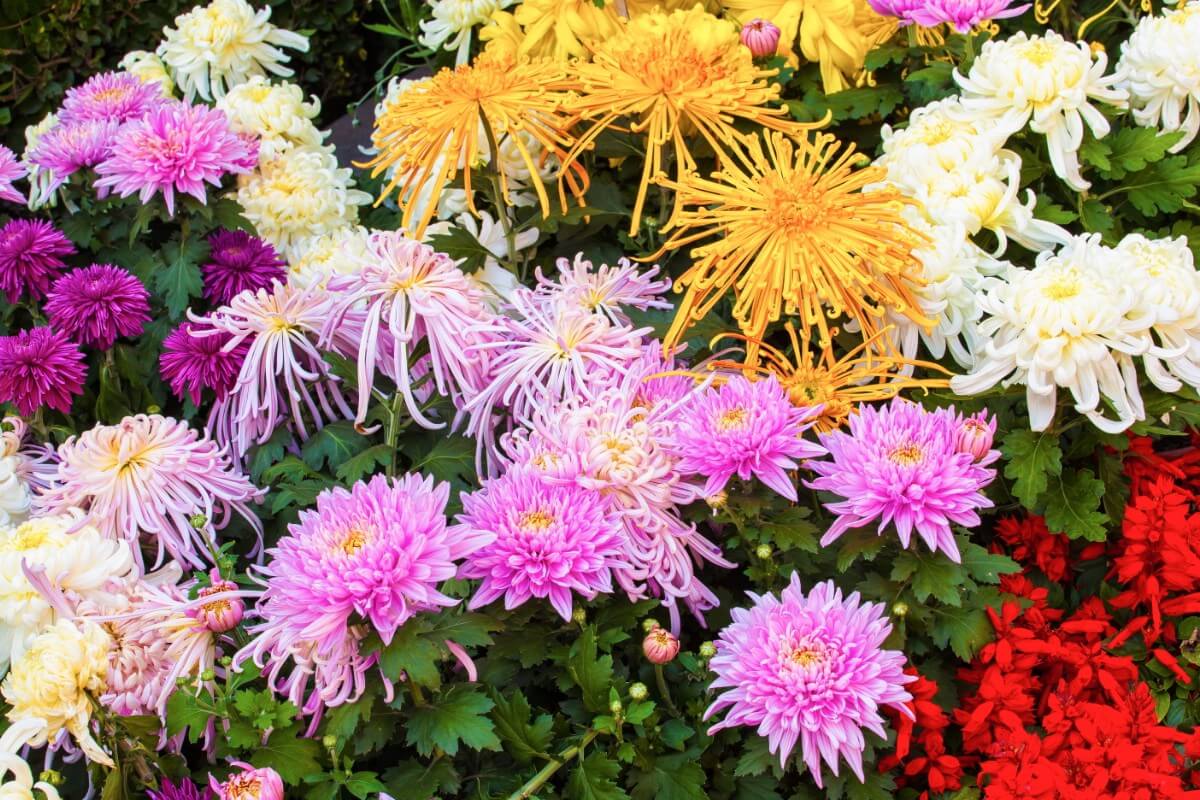
If you’re on the lookout for some gorgeous and unique mums to add to your garden, there are plenty of options available. After learning how to properly plant and care for chrysanthemums, you might be feeling excited to start shopping for your favorite cultivars! To explore an extensive selection of colorful mums, simply click here.